How Animals See the World
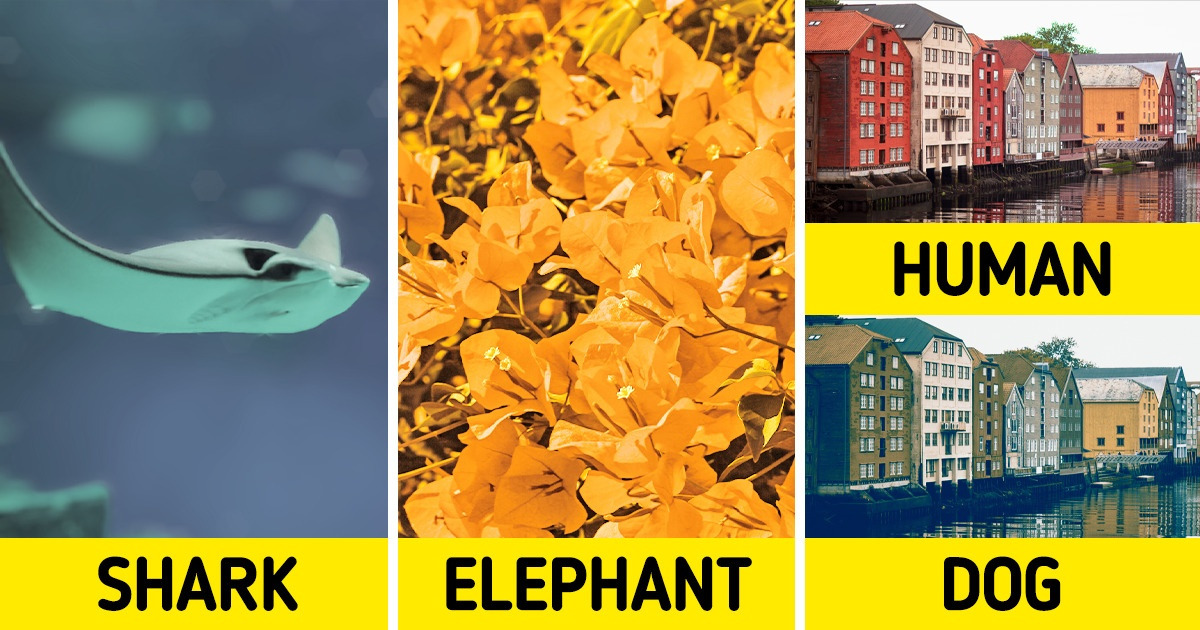
Many people think that the world is exactly like we see it. But in fact, all animals see their surroundings in their own way. It has to do with their lifestyle and the properties of their eyes.
We at 5-Minute Crafts decided to find out how some animals see the world. And in the bonus, we’re going to tell you which animal has the most unbelievable vision on Earth.
Dog
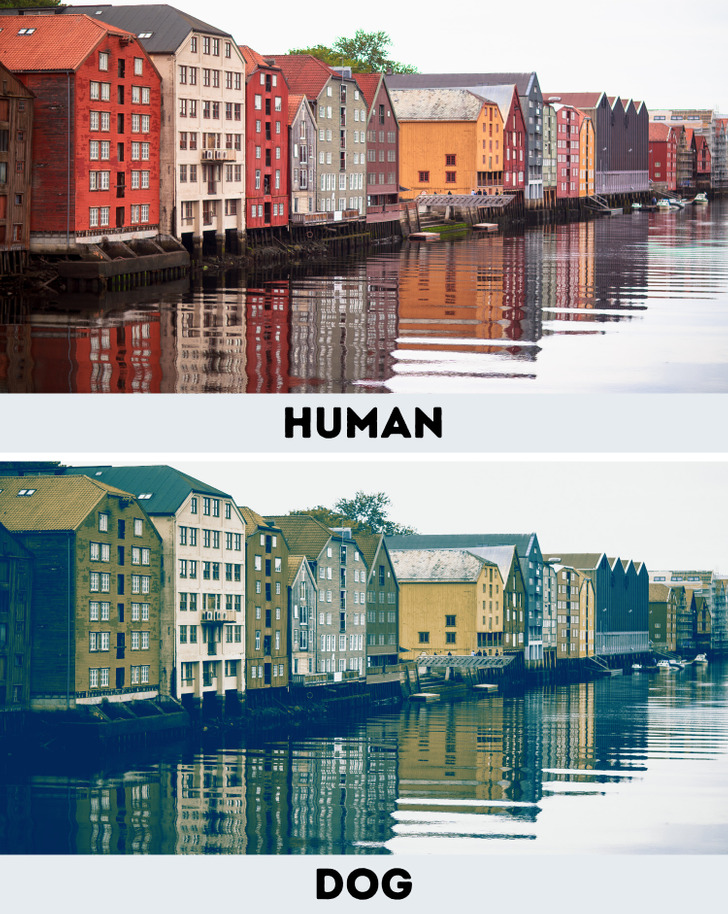
As you might remember from biology lessons, cone cells are the part of light-sensitive cells located in the retina. Every type of cone cell contains a pigment sensitive to certain wavelengths of light. The colors an animal sees depend on these pigments.
While people have 3 types of cone cells, dogs only have 2. They specialize on seeing yellow and blue all the way up to ultraviolet.
Cat
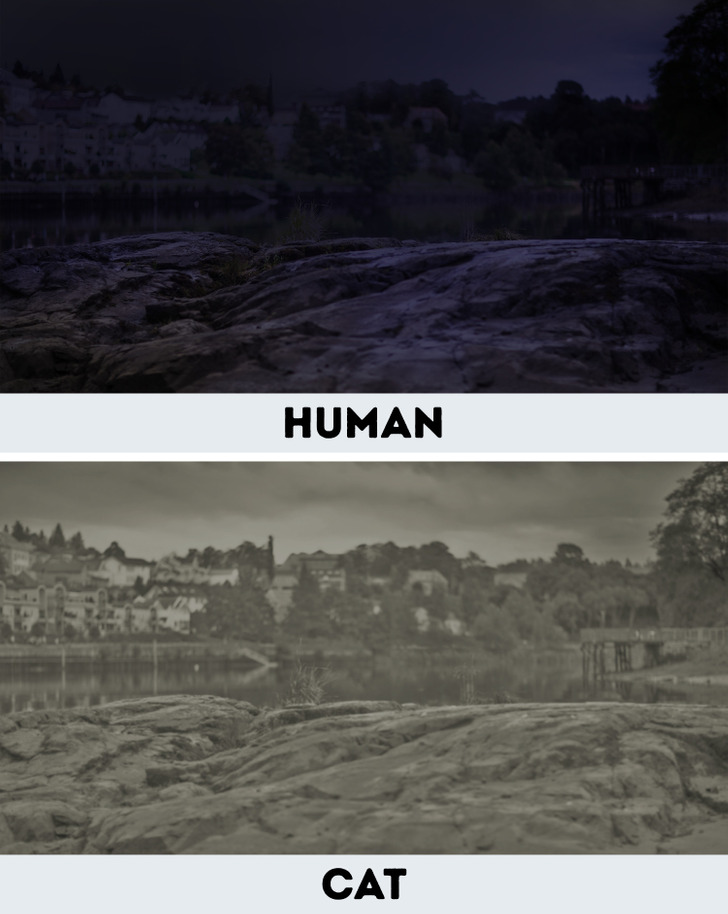
Cone cells are responsible for the daytime vision, and in darkness, rod cells are active. They are most sensitive to green-blue wavelengths.
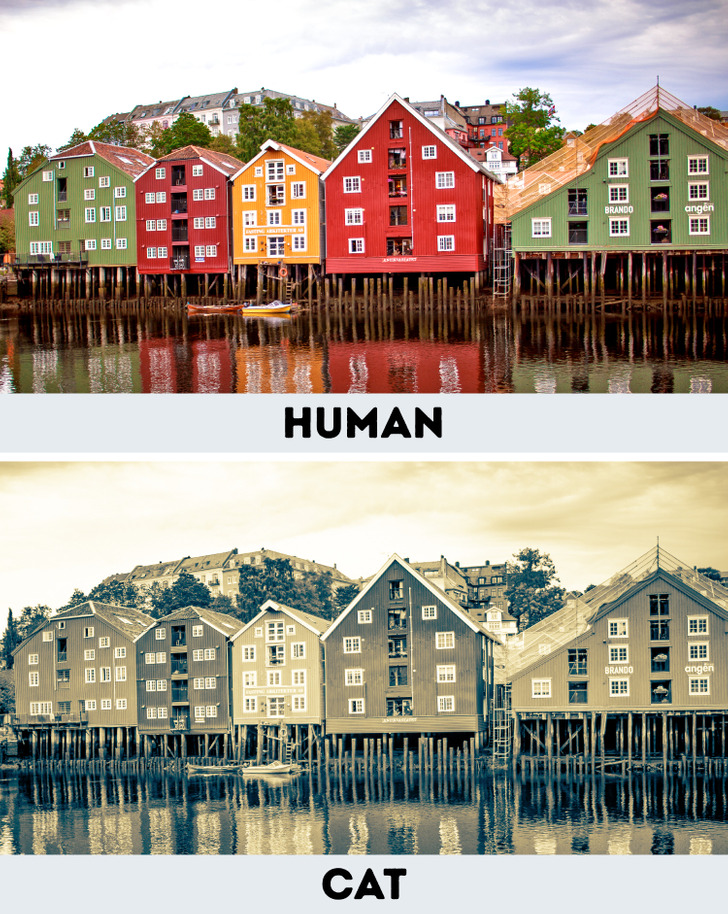
Cats have 6-8 times more rod cells than humans, which is why they can see very well at night. They also have very good peripheral vision. But during the day, people can see more bright colors than cats. Scientists don’t know for sure which colors are dominant in cats’ eyes. Some of them say blue and grey colors, others think that cats see blue, yellow, and greenish.
Elephant
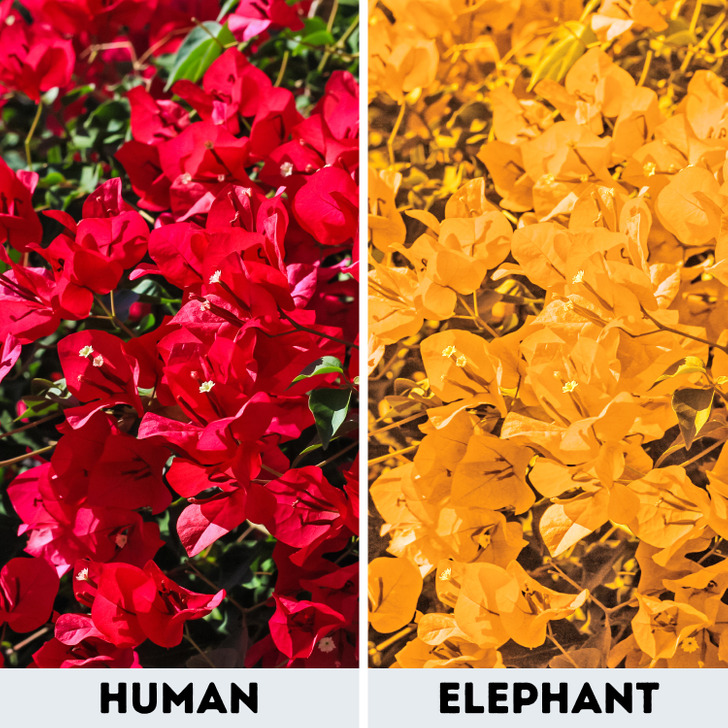
These giant mammals have the same vision as people that suffer from color blindness. They can tell apart yellow and blue but don’t see a difference between red and green.
In general, elephants don’t have very good vision. They are short-sighted: they only see well at a distance of around 60 feet. But they have very sharp hearing, and an excellent sense of smell and touch.
Gecko
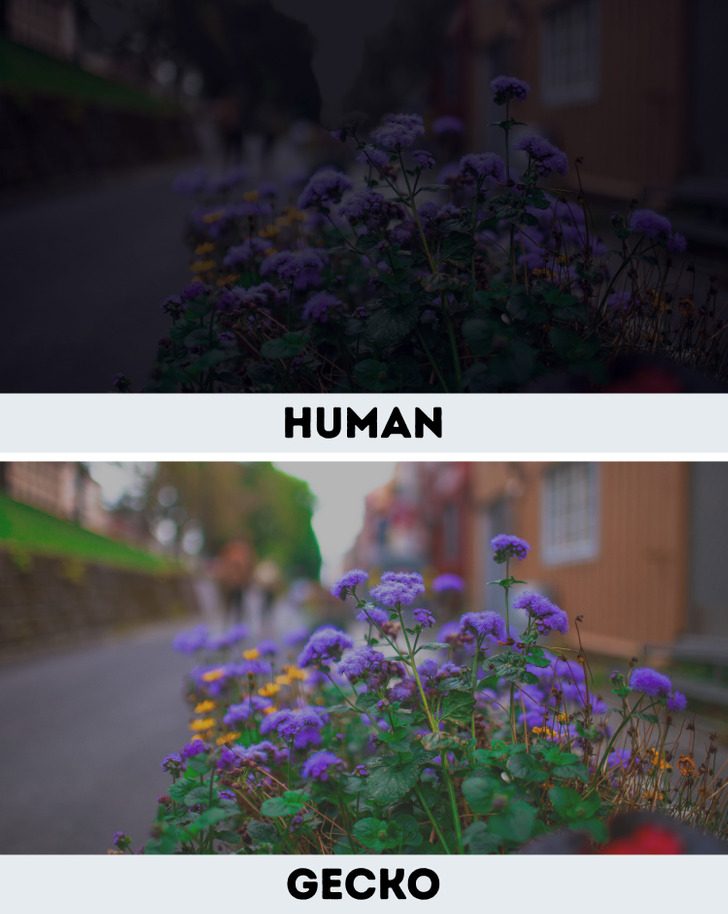
While cats have good night vision thanks to rod cells, which means they see everything with a particular sharpness — the number of colors is limited, geckos not only have sharp night vision, but they also see way more colors than humans. As a result of evolution, geckos are 350 times more color-sensitive during darkness than we are.
Giant clam
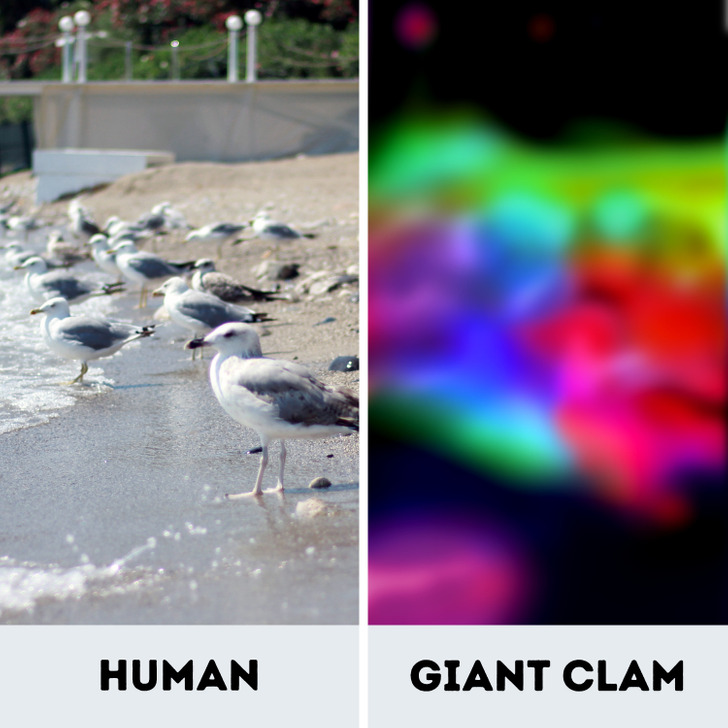
Adult giant clams have a stationary lifestyle. They attach themselves to rocks and coral and watch the world through hundreds of small eyes on the sides of their soft bodies.
They can tell apart colors but can’t process the information about the image, which is why they see colorful but abstract spots. But it still allows them to see motion from a distance and react to danger by spraying water or closing their shell.
Shark
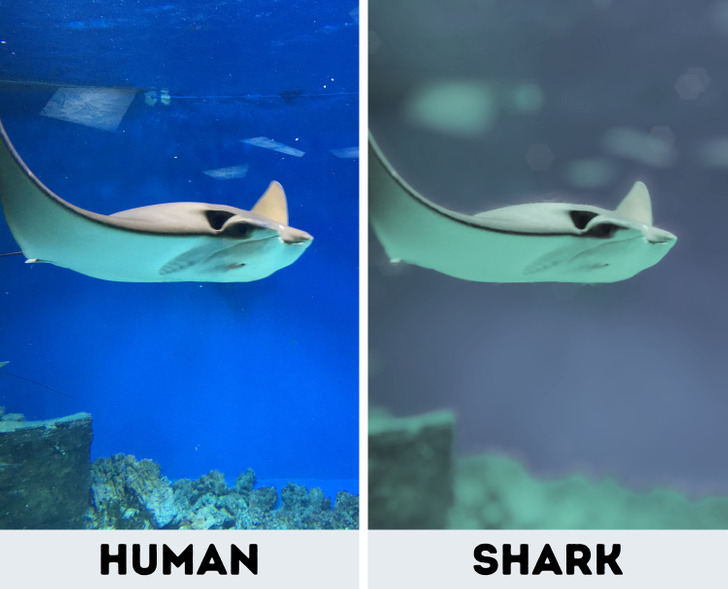
The vision of sharks is not sharp, but in certain situations, they can see quite well.
Sharks have a superpower. They can see in both stereoscopic and monocular vision. Stereoscopic is a type of 3D vision where the images from both eyes come together, gaining shape, depth, and distance. Monocular vision uses the image from only one eye. Even though the depth perception is worse in monocular vision, it improves the quality of their vision.
Sharks have 360-degree vision, but they can’t see further than 50 feet. Like cats, they see very well in darkness. When it comes to color, for many years, scientists thought that sharks’ retinas were full of rod cells. But recent studies showed that they have a vision pigment that allows them to see colors in blue and green spectrums.
Bonus: The mantis shrimp sees more than we can imagine
According to scientists, the mantis shrimp has the best vision among all animals. While a person sees the world through 3 light channels (red, green, and blue), the mantis shrimp has 12 color channels, they can also see ultraviolet and polarized light.